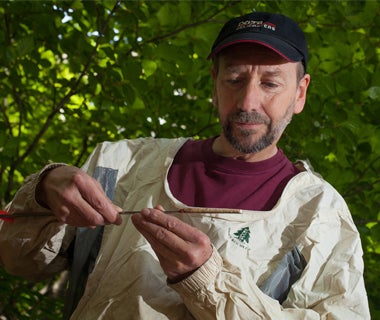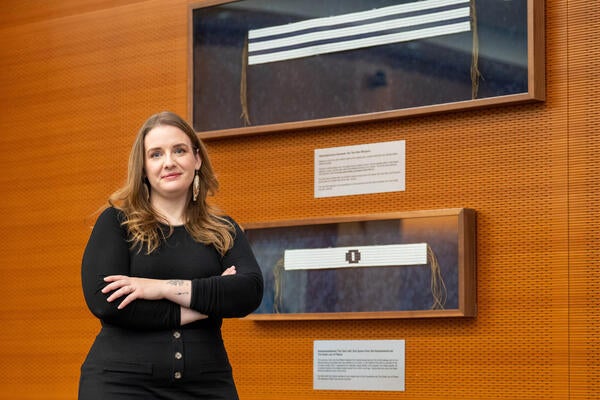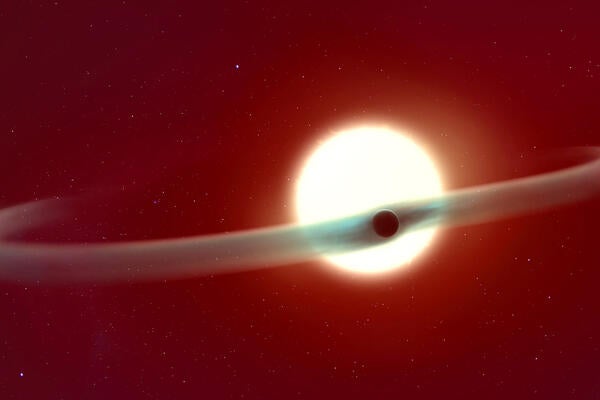
Ancient climate changes
Waterloo scientist studies isotopes for deeper understanding of what Earth’s climate was like thousands of years ago.

Waterloo scientist studies isotopes for deeper understanding of what Earth’s climate was like thousands of years ago.
By Christian Aagaard Communications and Public AffairsAs a young geologist more than 30 years ago, Thomas Edwards planned to muck about Canada's wilderness, looking for possible pipeline routes and resource opportunities.
Then he met Peter Fritz, founder of the Environmental Isotope Laboratory at the University of Waterloo. It was a pivotal encounter. Edwards changed course to examine what isotopes -- close kin of elements on the periodic table -- tell us about natural history.

"I had to admit, I had forgotten what an isotope was,'' says Edwards, an isotope hydrologist and geochemist in Waterloo's Department of Earth and Environmental Sciences. "I agreed to do a PhD with him.''
Isotopes reveal fine print of history
By studying ancient pollen and measuring tree rings, researchers can get a rough idea of what the climate was like hundreds or thousands of years ago.
But isotopes of carbon, oxygen and hydrogen provide the fine print in that history, adding depth and definition. The more researchers understand of past events, the better they are at offering an informed opinion on the future.
Edwards' work, boring holes into lake sediments and wood, has taken him around the world, from northern Canada to northern Sweden. The ratio of heavy and light isotopes of oxygen (18O and 16O) in wood cellulose, for example, tells scientists a great deal about temperature and moisture conditions in the past.
Water history shapes culture
"Everybody focuses on temperature,'' Edwards says of the popular interest in climate change. "Water is way more important . . .The water cycle (evaporation, condensation, precipitation) is basically a reflection of the energy in the atmosphere."
One project in which he is involved examines wood samples from structures built over the last 1,000 years in Sweden. That isotopic story of warm and cool periods, and of periods wet and dry, is mirrored in samples taken from trees in northern Canada.
The research is important, he says, because water history and social history can't separate themselves. Vikings roamed far west though ice-free northern waters. Aboriginal cultures strung rivers and lakes into canoe routes for trade and survival.
And water influences social development today. "I try to make that point in my teaching," Edwards says.

Read more
Waterloo researchers have developed a new quantum computing approach that brings science closer to simulating the early universe

Read more
New research from the University of Waterloo centres Haudenosaunee-led efforts in the repatriation and reclamation of cultural and intellectual property

Read more
Astronomers spot massive gas streams flowing from ultra-hot Jupiter that rewrite expectations for these massive giants of space
The University of Waterloo acknowledges that much of our work takes place on the traditional territory of the Neutral, Anishinaabeg, and Haudenosaunee peoples. Our main campus is situated on the Haldimand Tract, the land granted to the Six Nations that includes six miles on each side of the Grand River. Our active work toward reconciliation takes place across our campuses through research, learning, teaching, and community building, and is co-ordinated within the Office of Indigenous Relations.